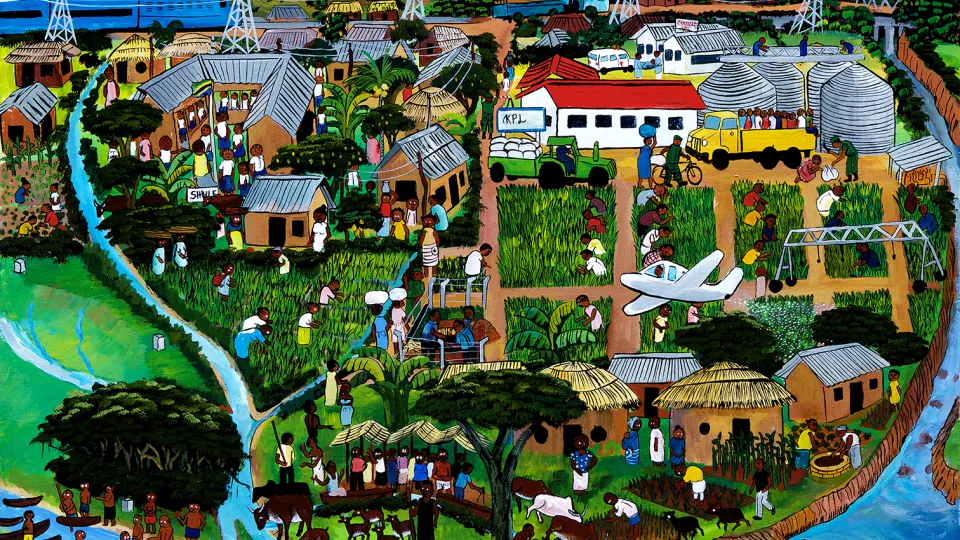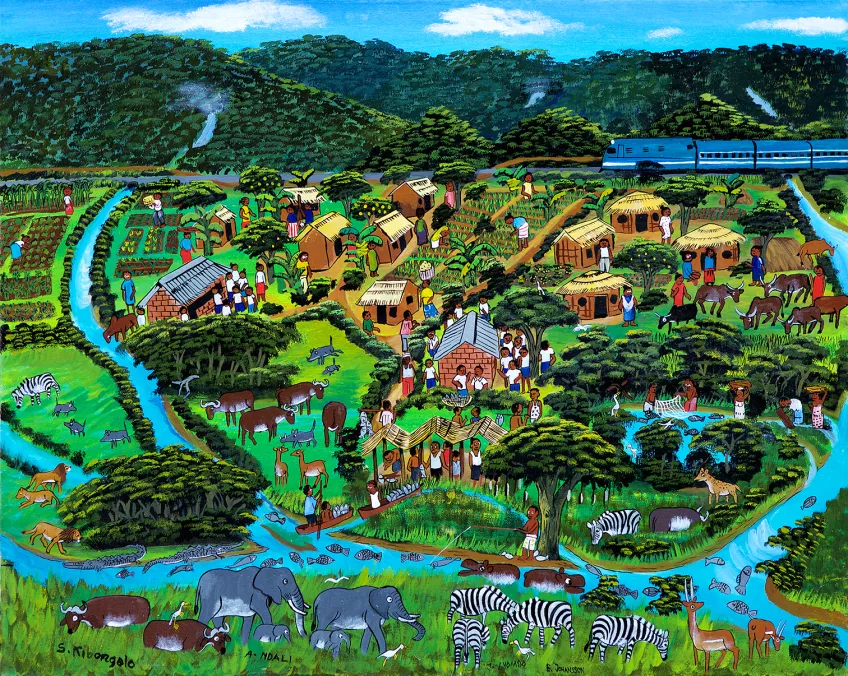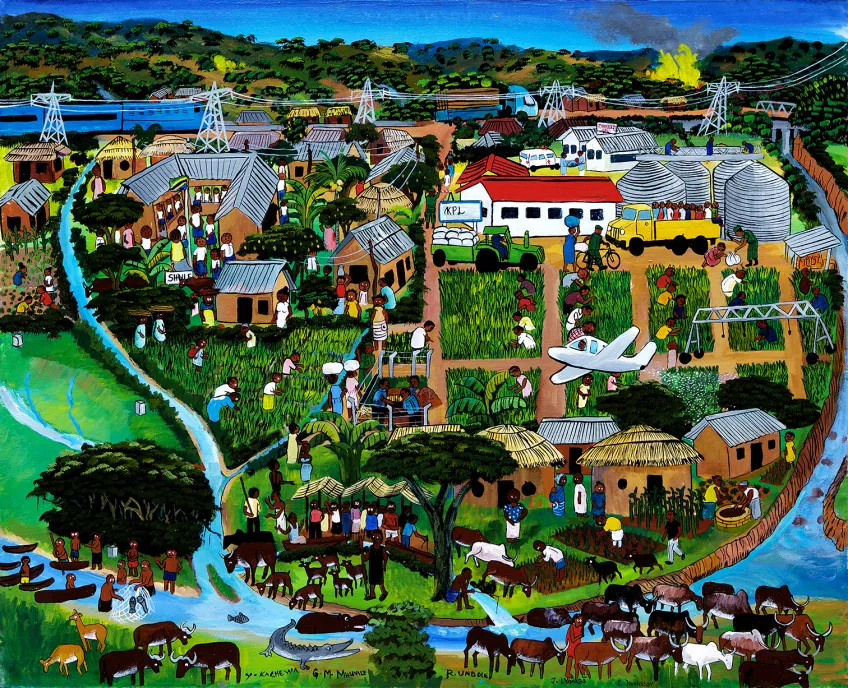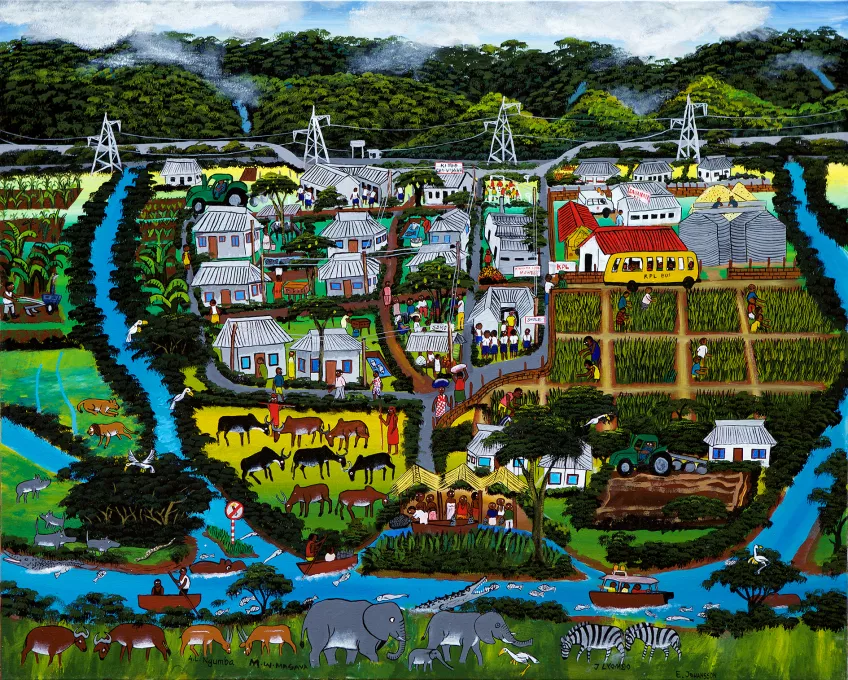- I always had a strong interest in water and in questions of justice, says LUCSUS PhD-candidate Emma Johansson, who recently completed her final seminar for her dissertation.
The disseratation consists of four scientific papers – which together focus on understanding how the supply and demand of natural resources (in particular water) change due to land use and land-cover change in areas that are experiencing rapid change due to large scale land acquisitions.
She notes that the research process has been about moving research scales – from the large, continental scale, in the form of global vegetation models, to the small local scale, in the form of field work.
- There is a real value in including both scales since it enables a more thorough understanding of how land use change affect both a geographical area and the local community.
- For me, the field work in countries such as Tanzania and Sierra Leone very much informed my desk research on socio-environmental impacts on land use change. It made me realise that people can be at risk of water shortage even in areas that are wet, she says.
She found for example that farmers she met in Sierra Leone (in an area with sugarcane plantations for biofuel production), expressed great concerns over lost access to streams and swamps that are important for washing, fishing, bathing, and sometimes drinking. In Tanzania, on the other hand, where Kilombero Plantations Limited is growing rice, farmers expressed concerns about rapid changes in water quantity and quality. Women in the same village also shared concerns of polluted water in the wells when the company is spraying herbicides on the fields.
- These concerns are both very local and very specific. And you cannot identify these types of land use changes using only large scale approaches such as global vegetation models.
Participatory Research
According to Emma Johansson, these examples highlight the importance of a flexible research mind in planning and carrying out research.
- Initially, I wanted to use a measure of water footprints to see how water usage had changed in various areas. However, I found that it was very difficult to tie these measures to how local communities actually experience water shortage. You have to dig deeper to get the whole picture.
She says that her findings also made her question the researcher’s prerogative in deciding on research questions before actually visiting a place, or talking to a community. This led her to pursue a participatory research approach, where she used art as a research method for one of her papers.
With the help of an artist she coached representatives from two communities in Tanzania to paint pictures of how they themselves perceived their natural surroundings. They used a local painting form called tinga-tinga, which make use of a layered approach to depict human and animals in a specific environment. They painted three pictures – which depict how they saw their surroundings in the past, how they see them in the present, and how they imagine the future.
- The painting process and the actual paintings themselves became a way to both articulate, and capture, how the local community experience changes in the supply of natural resources such as water. It also involved the community in a different way than say focus groups and interviews.
According to Emma Johansson, the research approach can be used as a way to reach outside academia.
- You do not have to be an academic to understand these pictures. And, the local community can use them to communicate around the challenges they are facing because of land use change.
She says that using art could be a way forward for sustainability studies in general.
- We have to take action today if we are to solve the sustainability challenges. I think art could be a good tool to highlight impacts of changes in natural resources on local communities, especially from a societal and justice perspective.
More Involvement from the Local Community
While Emma Johansson is not finished with her PhD, her findings highlight that there are ways for companies responsible for large scale land use change (through crop plantation for biofuel for example) to mitigate some of the negative impacts experienced by the local community.
- One major step forward is to include the local community in decision making, especially in decisions that affect shared natural resources. Often time the problem is that the local community has not been involved at all.
Other suggestions, she notes, are to include restrictions on water usage by the companies, grow crops with low water demand and use drip irrigation. Crops grown should also be useful to the local community, since today many of the crops are not used for food.
The three paintings below were made by local villagers in Tanzania as part of Emma Johanssson's participatory research project. They depict how they perceive their natural surroundings - in the past, present and future.



